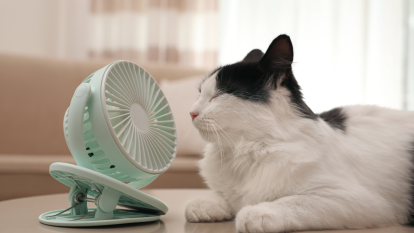How to Travel With a Cat: Expert Tips Let Your Feline Friend Join Your Adventures
Health and safety are at the forefront of successful travels with a cat

Like dogs, every cat has a distinct personality. Despite being perfectly happy entertaining themselves and lounging around in their home, it’s completely feasible for a cat to enjoy traveling! Whether you’re headed out on a road trip or flying to a different state for vacation or even to relocate, it’s important to keep stress at a minimum so you and your kitty can spend more quality time bonding and less time worrying. The good news is that if you prepare thoroughly, tune in to your cat’s needs and temperament ahead of and during your travels, you can both have a positive experience!
The most important steps for traveling with your cat
1. Ensure they have the right carrier
It is absolutely imperative that your cat have a carrier that will not only keep them safe and restrained to avoid injury on the move, but also make them feel safe and secure. The vets at VCA Animal Hospitals recommend getting your cat acclimated to their carrier well before you put them in there to embark on a long journey.
“Once your cat is used to her carrier, place her inside, close it, and walk around the house with her,” says the VCA team. “Be sure to reward her with a treat when she exits. Remember, the carrier must be a happy space. Once she is comfortable with an in-house walkabout, move her to the travel vehicle. Start the vehicle, run the engine for a bit, then take her back into the house. Once this sequence has occurred a few times, take a quick drive around the block, then back home, into the house, out of her carrier, and a treat for her good behavior!”
Social media star and feline behaviorist Jackson Galaxy says the carrier should be not only a means for transportation, but also a “portable basecamp,” where they can go when they feel uneasy or just want to unwind. Galaxy suggests placing treats, cozy blankets and items that smell like you to provide ultimate comfort. To warm your cat up to their carrier before the trip, he suggests placing the carrier near your bed for them to sleep, or even taking the top off to make it feel more like a den.
If you are flying with your cat, they should never be on an airplane as cargo, so it is vital to ensure beforehand that the cat carrier is airline approved so they can be situated underneath your seat when you fly. It can also be helpful to use something to cover the carrier during travel if your cat would rather not see everything going on around them.
Check out Galaxy’s full video on best practices for flying with cats!
2. Update and pack your cat’s medical records
Especially if you are boarding a plane with your cat, there is always a chance you will need to prove that they are up to date on vaccinations and have been tested for potentially dangerous or contagious diseases. Before your trip, bring your cat to the vet to ensure everything is in order, and keep a file of all of that proof in a place where you can access it when necessary. Check the standards beforehand for any place you plan to visit.
3. Harness train your cat ahead of time
While traveling by any means, it’s likely that you’ll need to stop at some point and take your cat out of their carrier. If you’re flying, you’ll need to take the cat out of the carrier to go through TSA. If you’re driving a long distance, your cat will need a break to relieve themselves at some point. Obviously, most cats don’t wear a harness to go on walks consistently the way dogs do, so put the harness on your cat (ensuring a comfortable fit) multiple times before your trip to get them accustomed to it as they should never be roaming free outside of your home.
4. Pack an emergency kit
You’ll want to pack more than enough of any medications your cat takes regularly in case you find yourself running low while away from home. You should also have extra towels and wet wipes to be able to clean up any pee, poop or vomit (which Galaxy says most cats are prone to while traveling, especially for long periods).
“Bring a towel that you don’t care about to put in the bottom of the carrier, because you may want to just get rid of it,” he advises. “Have garbage bags with you, puppy pee pads are also really nice to have on board, but those wet wipes go a long way. Make sure that they are pet approved.”
5. Bring items that will make your cat feel at home
In addition to emergency items, you can help your cat by keeping in line with the routine they already know as much as possible. Even though their surroundings are changing, they’ll feel much safer and calmer if they’re eating their normal food and treats, being fed at the same time and eating and drinking out of their bowls from home while on the road. You should also get your cat used to whichever type of litter and even litter box you will be bringing on your trip for them, or bring their regular litter and litter box with you.
6. Make sure your cat has proper identification
Your cat should always have proper identification on them, including a microchip and a collar with a tag with an accurate address and contact information so that, should your cat get away from you, they can be found and returned home safely.
Read on for more tips for cat parents!
What Human Foods Can Cats Eat? Vet Shares the Best Picks + 9 You Should Always Avoid
Why Do Cats Drool? Vet Explains the Reason + When You Should Be Concerned
6 Low-Cost DIY Cat Toys to Make That Your Feline Friend Will Love to Play With! Puzzle Toys and More













